On View
As Museums Tap Tastemakers to Elevate Their Exhibitions, India Mahdavi’s Design for a New Pierre Bonnard Show Sets the Standard
Mahdavi designed scenography for Melbourne's National Gallery of Victoria's newest exhibition.
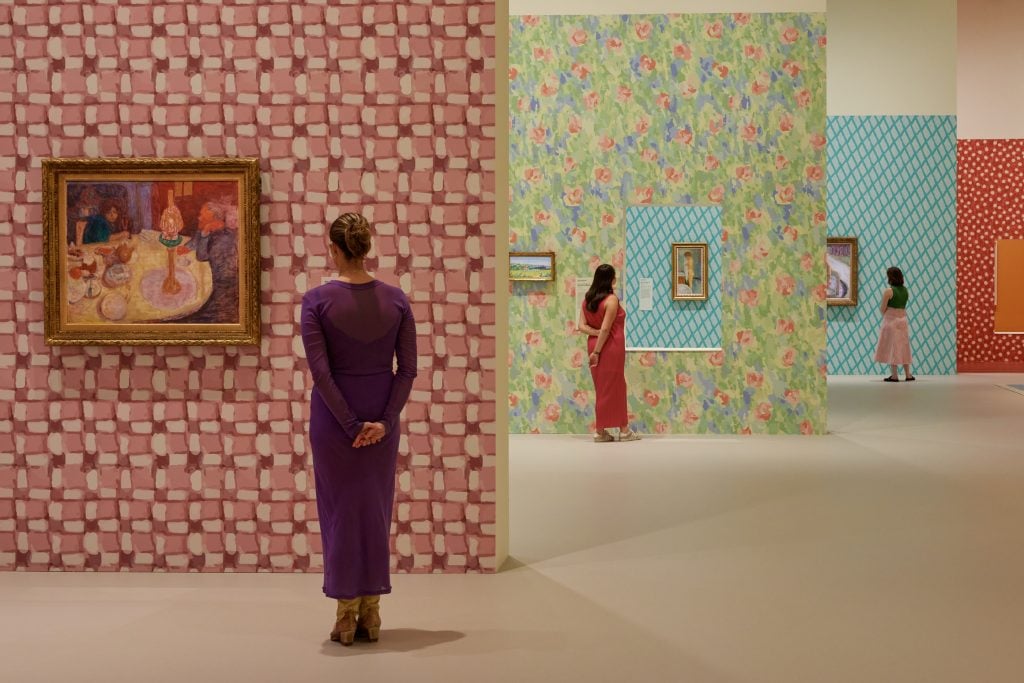
Mahdavi designed scenography for Melbourne's National Gallery of Victoria's newest exhibition.

Stephanie Sporn

Stepping into the National Gallery of Victoria’s “Pierre Bonnard: Designed by India Mahdavi” exhibition feels akin to entering a Post-Impressionist funhouse, quiltlike in its vibrant patchwork of galleries. The buzzed-about exhibition, co-organized with the Musée d’Orsay, showcases a remarkable selection of Pierre Bonnard’s late 19th-century paintings as well as curation of works by his contemporaries—all set within a colorful salon-like scenography designed by Mahdavi.
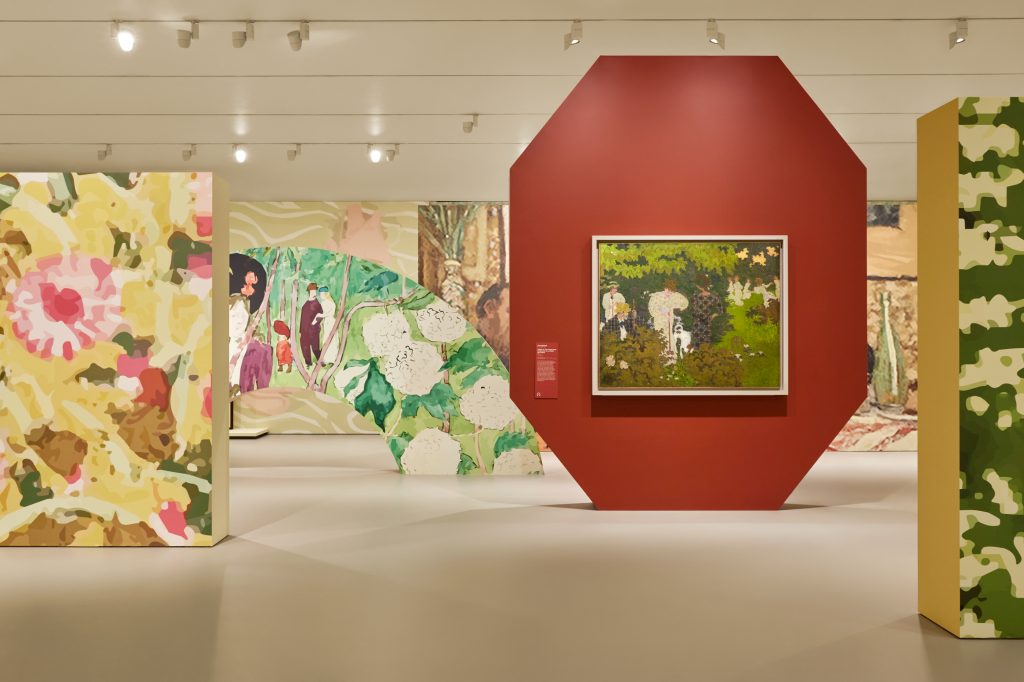
Installation view “Pierre Bonnard: Designed by India Mahdavi” 2023. Courtesy of the National Gallery of Victoria in Melbourne. Photo by Lillie Thompson.
Through clever cutouts that echo the favored window motif in the French artist’s paintings of interiors, visitors encounter sprawling pattern-filled vistas, layered to dizzying effect. “The whole show is about being immersive; the Nabi artists wanted you to enter a world where you can be surrounded by art rather than just looking at it,” says the award-winning French architect and designer of Iranian-Egyptian origin. Derived from the Hebrew word navi meaning “prophet,” the Nabis—a late 19th-century artist movement that included Bonnard—ushered in a new era of design-based art, including everything from furniture to commercial illustration.
Creating punchy, art-filled environments has become Mahdavi’s calling card. In 2014, she was tapped to design The Gallery at sketch London—arguably, Instagram’s most iconic restaurant—which she made into a plush pink haven to juxtapose British artist David Shrigley’s graphic, yet whimsical works on view. The design was so successful, Mahdavi’s three-year project lasted eight years, and in 2022, she was asked to redesign the space to complement British-Nigerian artist Yinka Shonibare’s quilts, sculptures, and masks.
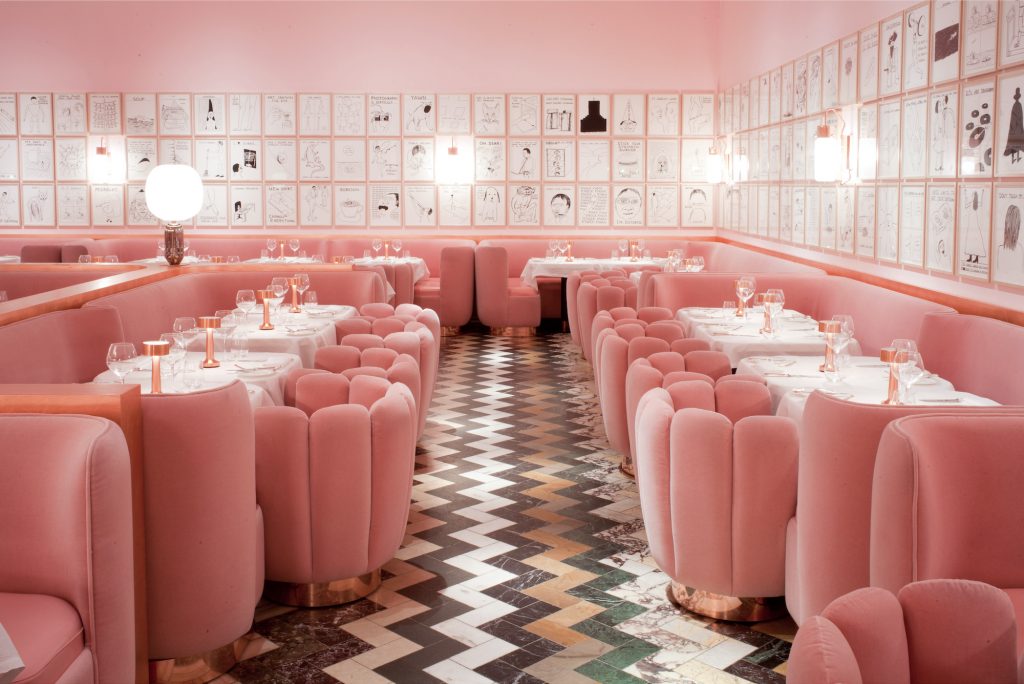
The Gallery at sketch, London, 2014 Photography © Thomas Humery
Mahdavi’s Charlotte velvet bubblegum-hued armchairs, as made famous by sketch, are among her furnishings sprinkled throughout the Bonnard exhibition, which opened this June for a four-month run. “Pierre Bonnard” is the latest of NGV’s Melbourne Winter Masterpieces, an exhibition series that aims to draw tourists to Melbourne during the off-season months. It was organized in collaboration with the Musée d’Orsay in Paris, which holds the largest collection of the artist’s work. Sourced from numerous public and private collections, it features more than 100 pieces by the Nabi titan known for his luminous palette, as well as his contemporaries, such as Édouard Vuillard and Félix Vallotton. Organized chronologically, the exhibition charts Bonnard’s shifting subject matter as he moves from urban Paris in the 1890s, encapsulated in street and theatrical scenes, to the South of France, where from the 1920s onwards he focuses on natural landscapes and quiet moments at home.
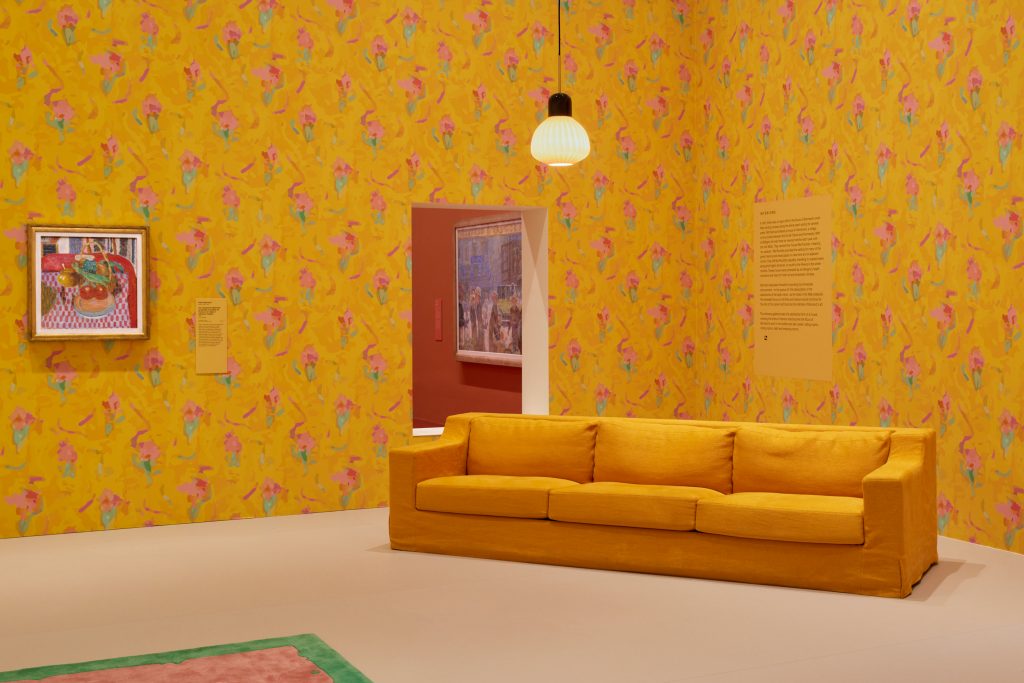
Installation view “Pierre Bonnard: Designed by India Mahdavi” 2023. Courtesy of the National Gallery of Victoria in Melbourne. Photo by Lillie Thompson.
To make Bonnard’s work, which spans paintings, photography, and the decorative arts, more accessible to Australian audiences, NGV enlisted Mahdavi to conceive the exhibition’s scenography—and, indeed, the pairing is undeniably a match made in polychromatic heaven. The conversation began five years when NGV leaders visited her Parisian studio. Upon viewing the catalogue for the museum’s groundbreaking 2018–19 exhibition, “Escher x nendo | Between Two Worlds,” in which Japanese design studio nendo responded to Dutch artist M.C. Escher’s work, Mahdavi was instantly inspired. “It was a very unusual and forward-thinking combination,” says Mahdavi, an admirer of both creative forces. “It was a new way of having a conversation between art and design.”
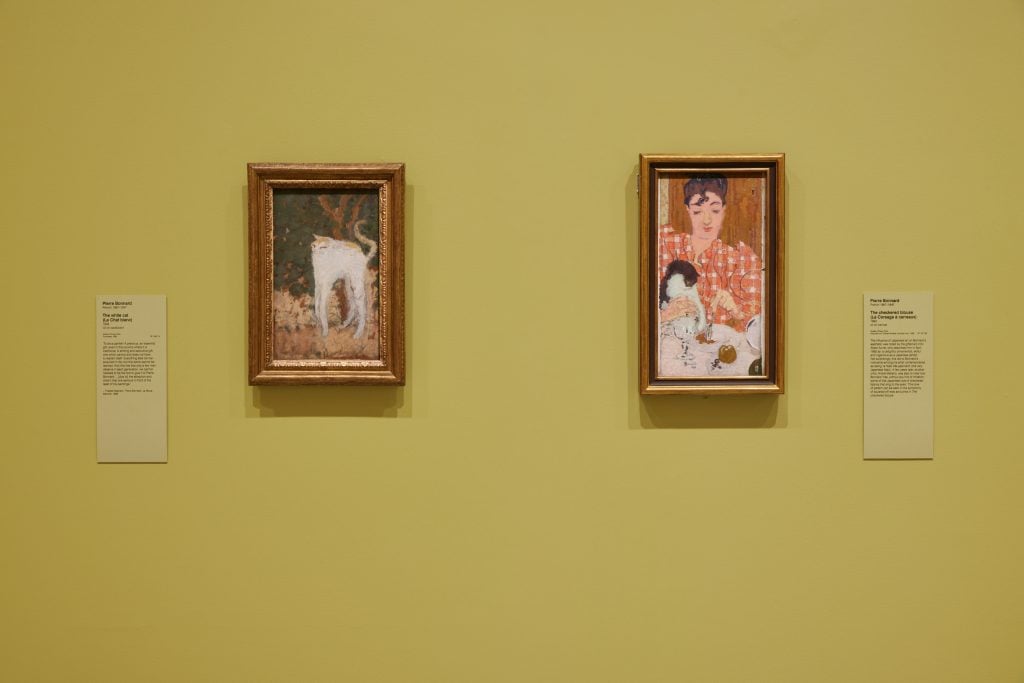
Installation view “Pierre Bonnard: Designed by India Mahdavi” 2023. Courtesy of the National Gallery of Victoria in Melbourne. Photo by Lillie Thompson.
Also particularly novel to Mahdavi was the blending art and commerce in the museum context—nearly all her furnishings in the exhibition are available for purchase via her showroom. For nearly a decade, auction houses have tapped interior designers to create vignettes (both digitally and in real life) that ground the art and objects they aim to sell. However, for a major museum to give a contemporary designer such a prominent voice (not only within the scenography but even the actual exhibition title) is daring—and possibly the future.
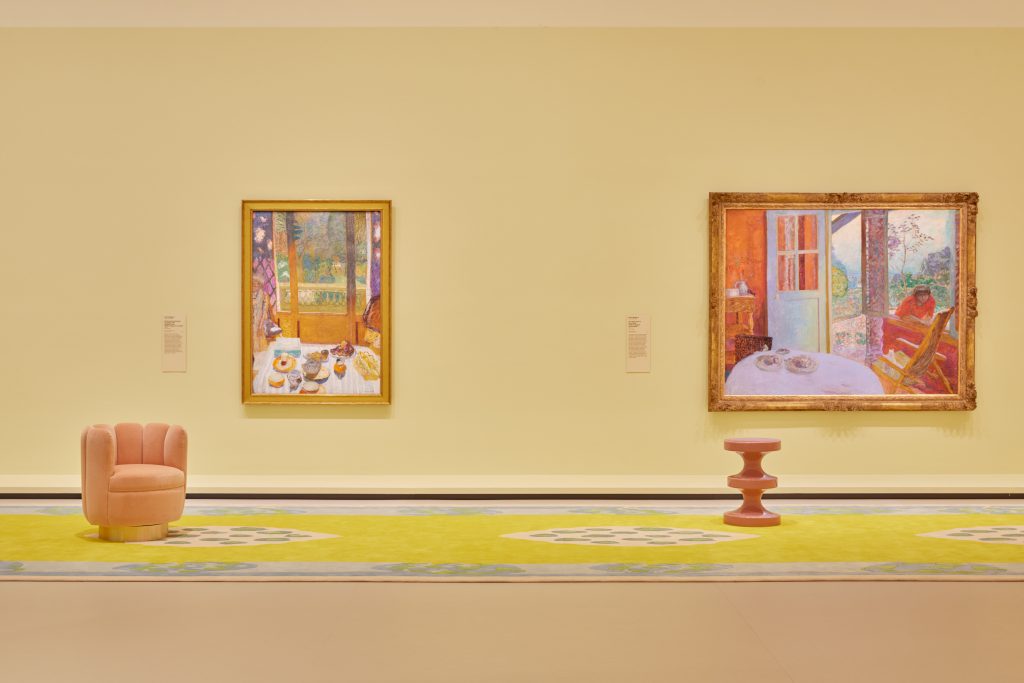
Installation view “Pierre Bonnard: Designed by India Mahdavi” 2023. Courtesy of the National Gallery of Victoria in Melbourne. Photo by Lillie Thompson.
“In large art museums, especially those with massive 19th-century art collections, I’m sure [the extent to which we incorporated Mahdavi’s vision] would be considered a bit sacrilegious. Many museums worry about an over-presence of someone else in the room beside the artist,” says Miranda Wallace, NGV’s Senior Curator of International Exhibition Projects. Perhaps indicating a changing landscape, this spring the Musée National Picasso-Paris opened a Picasso exhibition with artistic direction by British designer Paul Smith. “The freedom we gave India, and the way she responded to Bonnard through the environment she created, fit the nature of his work so perfectly. It’s not a forced complementarity.”
“Like Bonnard, I always work with my own memory of colors,” says Mahdavi, who shares how her nomadic childhood, during which she moved from “Technicolor” America to Germany, “a lost paradise of color where everything was black and white,” was formative on her aesthetic. Because Bonnard only worked from his memory (he’d sketch a scene after the fact and jot down notes recalling the lighting during a specific moment), Mahdavi found inspiration in the artist’s “distortion of reality,” reflected in his peculiar palette, flattened perspectives, and scenes conflating interiors and exteriors from different locations. “The same way that there’s an abstracted value to Bonnard’s paintings, the exhibition is designed like an abstraction of a home,” explains Mahdavi. Incorporating her own furnishings was one tactic to give NGV’s expansive galleries a more domestic scale. “It’s as if Bonnard is inviting guests into his home.”
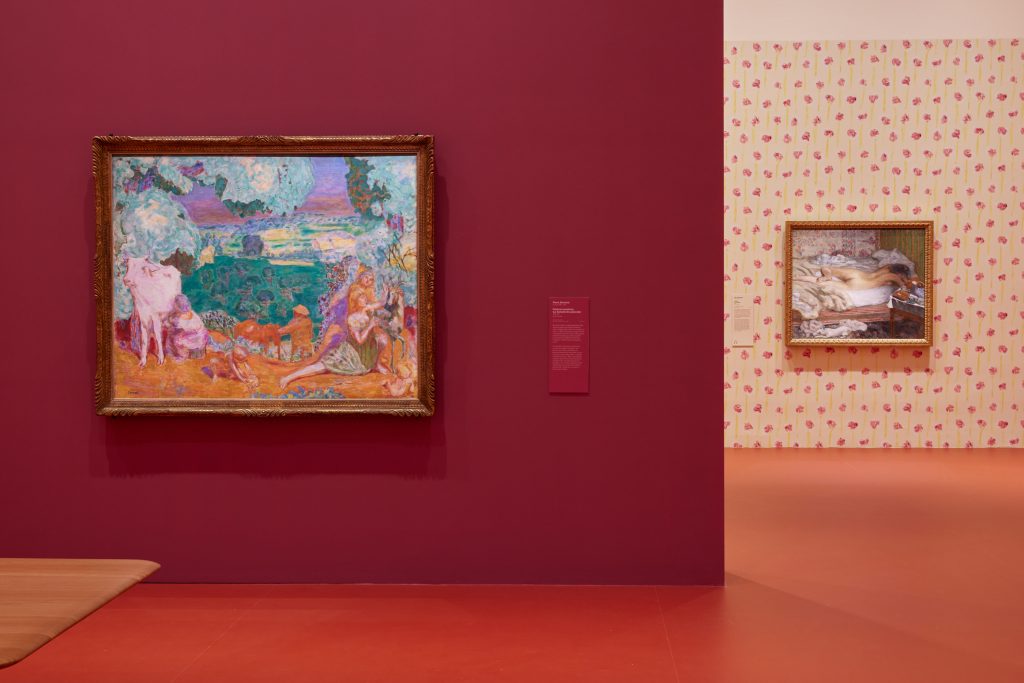
Installation view “Pierre Bonnard: Designed by India Mahdavi” 2023. Courtesy of the National Gallery of Victoria in Melbourne. Photo by Lillie Thompson.
Especially from his earlier years, many of Bonnard’s works are small format. “To give him a bigger voice” and demonstrate the distinctive way he produced “vibrations through pattern,” Mahdavi extracted details from wallpapers and fashions in his paintings, computer manipulated them, and blew them up into backdrops for the exhibition. “We wanted people to understand the strength and modern value of his art,” says Mahdavi of the mise en abyme effect. The carpets’ designs, too, stemmed from the painter’s interiors. Mahdavi’s heavy pattern use, complemented by solid walls in splashy colors, also hark back to the typically fully wallpapered homes of Bonnard’s day without feeling old and stuffy.
“We know that people love immersive experiences, but how do you make a meaningful connection between the environment and the work?” says Wallace on bringing historical artwork to new audiences. “The ambition is that you transport people on a conceptual and intellectual journey back in time, as well as into an artist’s vision of the world.” Given the endless creative possibilities that Bonnard’s homes afforded his art (his bathroom alone accounts for the setting of dozens of photographs and portraits of his wife, Marthe), the pairing of Bonnard’s œuvre with a contemporary interior designer makes sense; the choice of the bold, yet shrewd Mahdavi is what makes this exhibition evade gimmickry. Intentionally with very few digital components, the show is a reminder that spectacle and immersion can be achieved without flashy tech. In that regard, the NGV’s “Pierre Bonnard” is a much-needed antithesis to the trend of soulless projection-based shows à la Klimt and van Gogh.
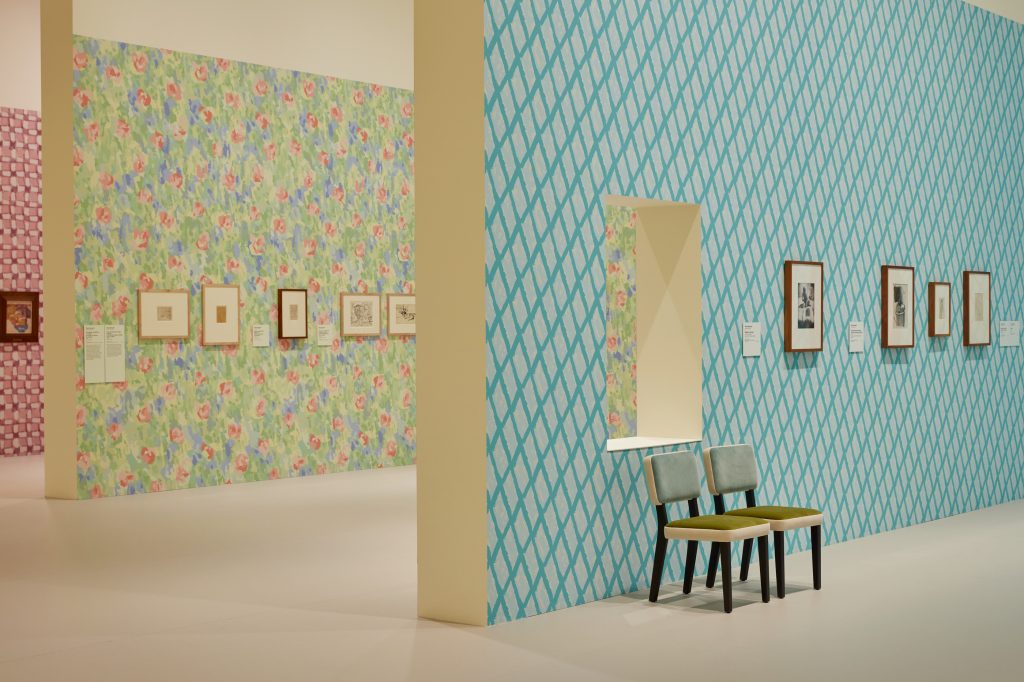
Installation view “Pierre Bonnard: Designed by India Mahdavi” 2023. Courtesy of the National Gallery of Victoria in Melbourne. Photo by Lillie Thompson.
“Bonnard said that ‘museums are filled with homeless works,’” says Wallace. ‘With India’s display, Bonnard’s artworks are rooted in a fertile and appropriate ground because it’s all about that notion of looking and enjoying the surroundings. The pleasure of the painting’s details comes to the fore and makes them feel fresh.”
As for the cadence of shows featuring an external collaborator, Wallace believes NGV director Tony Ellwood is “very keen to push the envelope with Melbourne Winter Masterpieces,” and that “we will look for opportunities where there is a subject that allows us to really engage with design because it is such a fundamental part of this institution.” However, “having the right pairing is not necessarily an annual thing.”
“As a museum, we are increasingly challenged to diversify what we’re offering,” Wallace continues. “If we are going to do a show about a European man from the 19th or 20th century, the question becomes ‘how can we also then make sure we are presenting something that wouldn’t have been done 30 years ago?’”